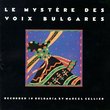| All Artists: Peter Maxwell Davies, BBC Philharmonic Title: Symphony 2 Members Wishing: 0 Total Copies: 0 Label: Collins Classics Release Date: 9/13/1994 Genre: Classical Styles: Historical Periods, Modern, 20th, & 21st Century, Symphonies Number of Discs: 1 SwapaCD Credits: 1 UPCs: 5023391140327, 723721918729 |
Search - Peter Maxwell Davies, BBC Philharmonic :: Symphony 2
 | Peter Maxwell Davies, BBC Philharmonic Symphony 2 Genre: Classical
|
CD DetailsSimilar CDsSimilarly Requested CDs
|
CD ReviewsSome notes on this work 10/01/2002 (5 out of 5 stars) "At the end of Davies' first symphony, there is a sense that the journey has not ended, but rather just begun. He purposefully ended the work on an unresolved note, using chords a fifth above their "harmonically logical position." This was a technique borrowed from Sibelius, who used a similar method to end his Fifth Symphony. Davies' second symphony, and first intended initially as such, can be viewed as another step along the path of symphonic exploration, as the composer works to find solutions to inherent problems within the form.
The second symphony was a commission from Seiji Ozawa and the Boston Symphony Orchestra, which would premiere the work in February 1981 at Boston's Symphony Hall. The piece again featured a large section of tuned percussion intended to carry its own share of the musical burden.Davies uses a traditional, four-movement structure to guide the work. As in his first symphony, the sea plays a large part in Davies' own creative thinking. He notes: " The new symphony is not only a direct response to the sounds of the ocean's extreme proximity...but also a more considered response to the architecture of its forms. I have observed two basic wave-types of potential interest - that where the wave-shape moves through the sea, while the water remains (basically) static - as when breakers roll in towards a shore-line (moving form, static content of wave) - and that where the wave-shape is static and constant, while the water moves through it - as when an obstacle, a sea-wreck, for example, protrudes through the surface of a tide race, making a plaited wave-shape behind it (static form, moving content of wave)."The influence of Sibelius again figures in the piece, particularly in the fourth movement where Davies uses the Sibelian technique of structural acceleration to transform an Adagio passacaglia first into an Allegro, and finally a Presto.Davies uses the plainsong 'Nativitas Tua, Dei Genetrix', which celebrates the birthday of the Virgin Mary, a birthday shared by Davies, as a means to unify the movements. Davies, always interested in higher architectures, put his own spin on the plainsong. The song was transformed, at times, using the magic squares of the Sun and Mars. Davies explains: " These are arrangements of sequences of numbers arranged into squares, so that by reading the square in particular ways, arithmetical constants are given - they are a gift to composers is used very simply as an architectural module, and their astrological overtones are attractive and intriguing."" |

 Track Listings (4) - Disc #1
Track Listings (4) - Disc #1









![Brahms: Ein deutsches Requiem [A German Requiem]](https://nationalbookswap.com/cd//m/23/8723/6058723.jpg)
